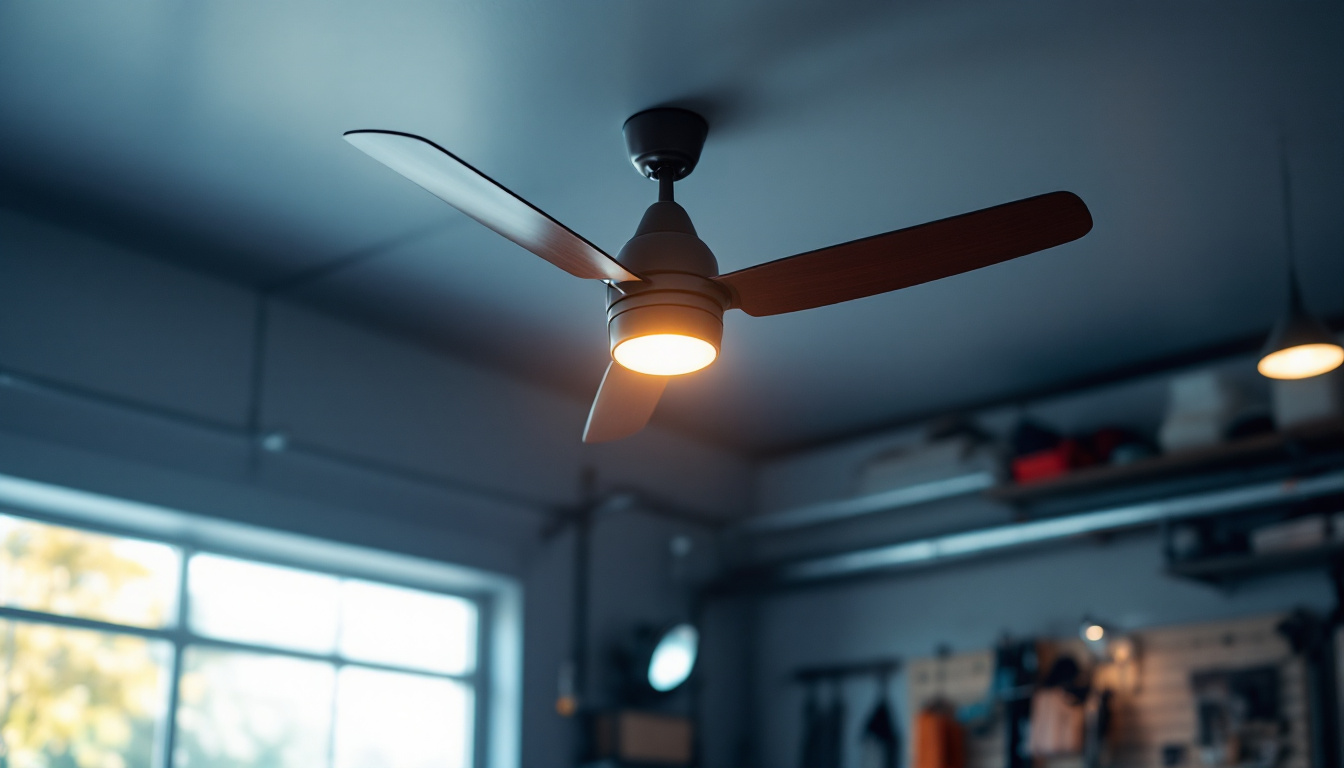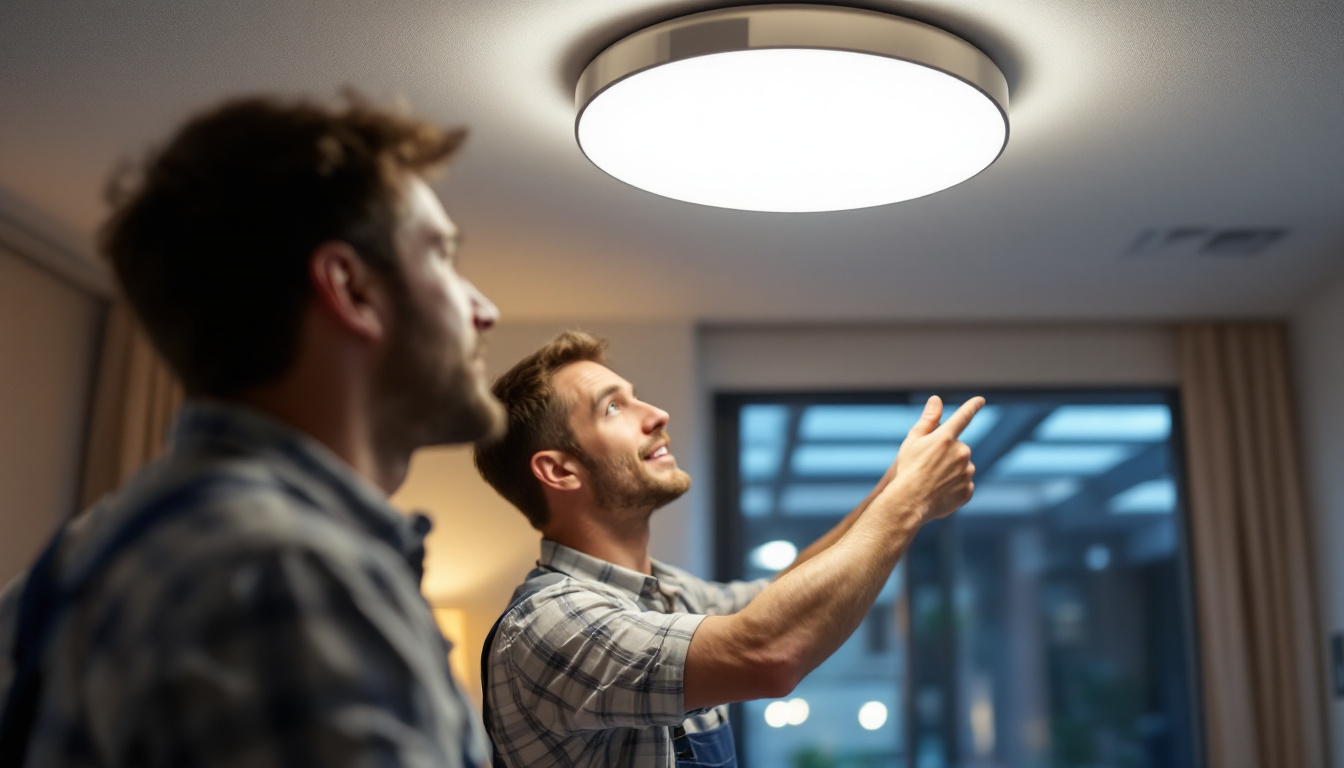

As the demand for efficient and effective cooling solutions continues to rise, ceiling fans have become an essential component in many residential and commercial spaces. For lighting contractors, understanding the intricacies of garage ceiling fans is crucial, especially when integrating them into lighting designs. This article delves into the various aspects of garage ceiling fans, providing lighting contractors with the knowledge they need to make informed decisions for their projects.
Garage ceiling fans are specifically designed to enhance airflow in garages, workshops, and other similar spaces. Unlike standard ceiling fans, these fans are engineered to withstand the unique conditions often found in garages, such as temperature fluctuations, dust, and humidity.
The design of garage ceiling fans plays a pivotal role in their functionality. Most models feature robust materials that resist corrosion and wear, ensuring longevity even in challenging environments. Additionally, many garage fans come with a more powerful motor than typical ceiling fans, allowing them to move larger volumes of air efficiently.
When selecting a fan for a garage, lighting contractors should consider the fan’s blade size and pitch. Larger blades with a steeper pitch can move more air, making them ideal for larger spaces. It’s also important to assess the fan’s mounting options, as some models can be flush-mounted, while others may require downrods for optimal performance. The aesthetic aspect should not be overlooked either; many garage ceiling fans now come in sleek designs that can complement the overall decor of the garage, making it a more inviting space for hobbies or projects.
energy efficiency is a critical factor for both homeowners and contractors. Garage ceiling fans are often equipped with energy-efficient motors and can significantly reduce the reliance on air conditioning systems. By circulating air effectively, these fans can create a comfortable environment while minimizing energy costs.
Many modern garage fans also come with energy-saving features such as variable speed settings and remote controls. These features allow users to customize airflow according to their needs, further enhancing energy efficiency. For lighting contractors, recommending energy-efficient options can lead to satisfied customers and potentially lower utility bills. Furthermore, some models are designed to be compatible with smart home systems, enabling users to control their fans via smartphone apps or voice commands, adding a layer of convenience that aligns with today’s tech-savvy lifestyles.
Moreover, the placement of garage ceiling fans can significantly impact their effectiveness. Strategically positioning fans to create cross-ventilation can enhance cooling during hot summer months, while also helping to disperse heat generated by tools or vehicles in the winter. This versatility not only maximizes comfort but also extends the usability of the garage throughout the year, making it a multifunctional space for various activities, from DIY projects to car maintenance.
Proper installation is vital for the optimal performance of garage ceiling fans. Lighting contractors must be well-versed in the specific requirements and best practices associated with installing these fans. A thorough understanding of the installation process not only enhances the fan’s functionality but also extends its lifespan, ensuring that homeowners get the most out of their investment.
Before installation, it’s essential to evaluate the electrical setup in the garage. Most ceiling fans require a dedicated circuit to operate safely and efficiently. Lighting contractors should check the amperage and voltage ratings to ensure compatibility with the fan’s requirements. This step is crucial because inadequate power supply can lead to poor performance or even damage the fan’s motor over time.
Additionally, it’s crucial to install the fan at the correct height. The ideal mounting height for a ceiling fan is typically between 8 to 9 feet above the floor. This height allows for optimal airflow while minimizing the risk of accidents. If the garage has high ceilings, using a downrod may be necessary to achieve the proper height. Moreover, it’s beneficial to consider the fan’s blade pitch, as a steeper angle can enhance airflow efficiency, making it an important factor in the overall installation process.
Garage ceiling fans can be mounted in various ways, including flush mounting, standard mounting, and downrod mounting. The choice of mounting option depends on the ceiling height and the desired aesthetic. Flush-mounted fans are ideal for low ceilings, while downrod-mounted fans work well in spaces with higher ceilings. Each mounting option has its own set of advantages; for instance, flush mounts provide a sleek look that can seamlessly blend into the garage’s design, while downrod mounts can create a more dramatic effect with longer blades that enhance airflow.
When recommending mounting options, contractors should also consider the fan’s weight and balance. Ensuring that the fan is securely mounted will prevent wobbling and noise, providing a better experience for the user. Additionally, it’s important to take into account the garage’s layout and any potential obstructions, such as beams or storage units, that could interfere with the fan’s operation. Proper positioning not only maximizes airflow but also enhances the overall aesthetic appeal of the space, making it a more comfortable environment for various activities.
For lighting contractors, integrating lighting fixtures with garage ceiling fans can enhance both functionality and aesthetics. Many ceiling fans come with built-in light kits, providing an all-in-one solution for illumination and air circulation. This integration not only saves space but also simplifies the installation process, making it a popular choice among homeowners looking to maximize their garage’s utility.
When selecting light fixtures to pair with garage ceiling fans, it’s essential to consider the overall design and purpose of the garage. For instance, if the garage is used for detailed work, such as automotive repairs or woodworking, brighter, focused lighting may be necessary. In contrast, a garage used primarily for storage may benefit from softer, ambient lighting. The right choice can significantly enhance visibility and safety, reducing the risk of accidents while working on projects.
LED light fixtures are often recommended due to their energy efficiency and longevity. They produce less heat compared to traditional incandescent bulbs, making them a suitable choice for use alongside ceiling fans. Additionally, LED lights come in various color temperatures, allowing contractors to customize the lighting to suit the space’s needs. For example, a cooler white light can improve concentration and visibility for intricate tasks, while warmer tones can create a more inviting atmosphere for casual use. Furthermore, dimmable LED options can provide versatility, allowing users to adjust the brightness based on the task at hand.
As smart home technology continues to evolve, integrating smart controls with garage ceiling fans and lighting fixtures has become increasingly popular. Smart fans can be controlled via smartphone apps or voice commands, providing users with convenience and flexibility. This integration allows homeowners to adjust settings remotely, making it easier to manage their garage environment even when they are not physically present.
For lighting contractors, recommending smart technology can enhance the overall appeal of the installation. Features such as programmable schedules, remote access, and energy monitoring can significantly improve user experience and satisfaction. However, it’s essential to ensure compatibility between the fan, lighting fixtures, and smart control systems. Additionally, incorporating sensors that detect motion or ambient light levels can further optimize energy usage, ensuring that lights and fans operate only when needed. This not only contributes to energy savings but also enhances the longevity of the fixtures, making it a win-win for both contractors and homeowners alike.
To ensure longevity and optimal performance, regular maintenance of garage ceiling fans is essential. Lighting contractors should educate clients on the importance of routine care and provide tips for maintaining their fans and lighting fixtures.
Dust accumulation can hinder the performance of ceiling fans and lighting fixtures. Regular cleaning is necessary to maintain airflow and ensure adequate illumination. It is recommended to clean the fan blades and light fixtures at least once every few months, using a soft cloth or a duster to avoid scratching surfaces.
For hard-to-reach areas, a vacuum cleaner with a brush attachment can be an effective tool. Additionally, using a damp cloth can help remove stubborn grime, but it’s essential to turn off the fan and lights before cleaning to ensure safety.
Over time, components of garage ceiling fans and lighting fixtures may experience wear and tear. Lighting contractors should advise clients to regularly inspect their fans for any signs of damage, such as loose blades, frayed wires, or unusual noises.
If any issues are detected, it’s crucial to address them promptly to prevent further damage. In some cases, replacing worn-out parts may be necessary, while in others, a complete fan replacement may be the best option. Providing clients with maintenance checklists can help them stay proactive in caring for their ceiling fans and lighting systems.
Garage ceiling fans are an essential component in creating comfortable and functional spaces. For lighting contractors, understanding the unique features, installation requirements, and maintenance needs of these fans is crucial for successful project execution. By integrating ceiling fans with lighting solutions, contractors can enhance the overall user experience while promoting energy efficiency.
As the market for garage ceiling fans continues to evolve, staying informed about the latest trends and technologies will enable lighting contractors to provide the best solutions for their clients. Whether it’s selecting the right fan, integrating smart technology, or ensuring proper maintenance, knowledge is key to delivering exceptional service and installations.
Ultimately, a well-implemented garage ceiling fan system can significantly improve the usability of a garage, making it a more enjoyable and functional space for homeowners and businesses alike.
Ready to elevate your lighting projects with the best in garage ceiling fans and lighting solutions? Look no further than LumenWholesale, where we provide contractors with superior, spec-grade lighting products at unbeatable wholesale prices. Say goodbye to local distributor markups and hello to our extensive selection that meets the highest industry standards. With free shipping on bulk orders, you can trust that you’re getting premium lighting at the best value — all without hidden fees or compromises. Enhance your next project with the quality, affordability, and convenience that only LumenWholesale can offer. Wholesale Lighting at the Best Value.

Discover the essential insights and trends in outdoor lighting that every contractor should know.

Discover essential insights into LED ceiling lights that every lighting contractor should know.

Discover the essential insights lighting contractors need to know about wall sconces, from design trends to installation tips, ensuring your projects shine with both style and functionality..

Discover essential insights into the must-have electrical tools for lighting contractors.
Get notified when NEW deals are released.
Optimize your budget with wholesale discounts.
Only top-quality, specification-grade lighting products.
No additional costs at checkout - what you see is what you pay.
We understand the unique needs of contractors.